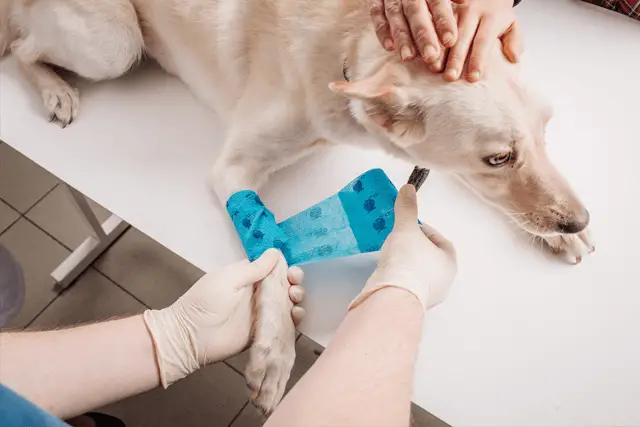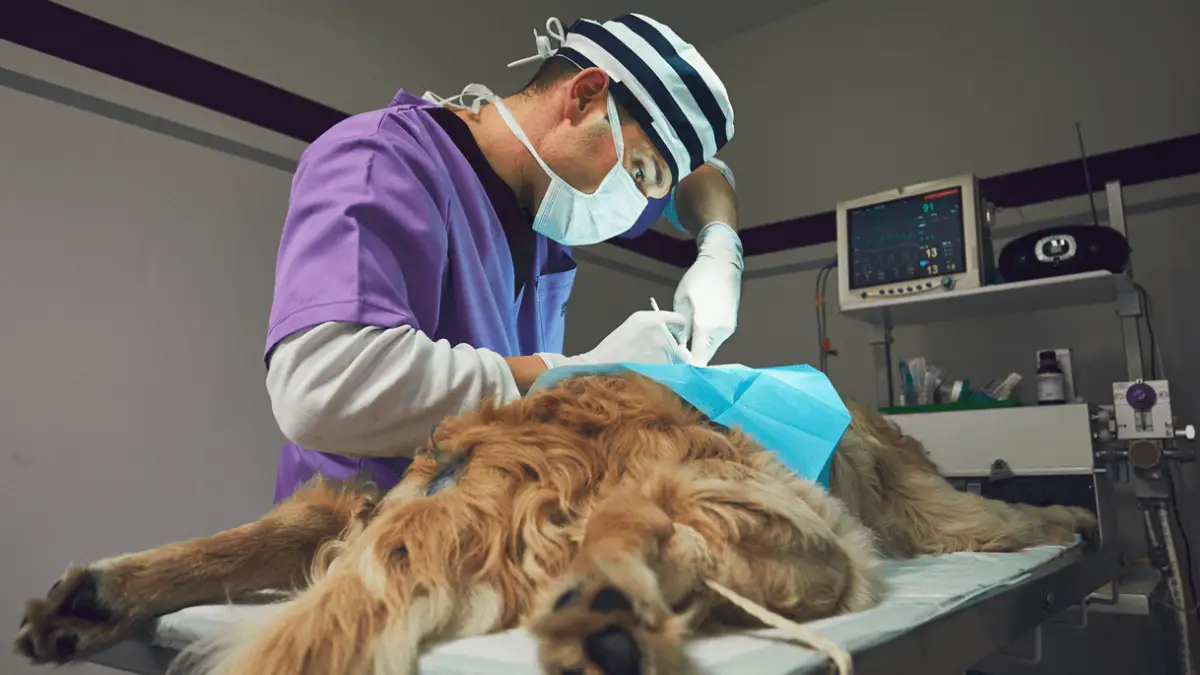All About Cancer in Dogs
19.02.2021.
Cancer, or tumor, is one of the scariest diagnoses our dogs could get. This is a severe health problem that often has fatal outcomes. Dogs are family members; there is no denying that, and learning that a family member has such a dangerous disease can be heartbreaking.
Cancer is the leading cause of death in dogs over ten years of age, and just like humans, dogs can develop different kinds of cancers. Luckily, some forms are treatable if caught early, and you must keep a close eye on your beloved dog. Check them regularly for any signs of abnormalities, and if you notice any of these potential symptoms, don’t hesitate to contact your vet:
- Enlarged lymph nodes
- Wounds that won’t heal
- Lameness or stiffness in bones
- Swelling
- Abnormal bleeding
Unfortunately, cancers are sneaky, and it is pretty hard to notice them at the earliest stages. Some cancers have no symptoms, and by the time they start showing, it is already too late. It is essential to keep positive and don’t panic. We completely understand that hearing such news is one of the worst things in the world, but you have to make clear choices about your dog’s treatment.
Here is a list of the five most common types of cancer in dogs and how to treat them.
1. Mast cell tumor
A mast cell tumor is a type of dog tumor that consists of mast cells. It can affect all parts of the body with mast cells, and those are the liver, bone marrow, spleen, and intestine. This cancer causes weird masses or nodules on the skin, which is how most dog owners notice it. Scientists are still not sure what causes it, but the most probable cause is a mix of risk factors. All dogs can develop this type of cancer, but some breeds seem to be more prone to it than others. Those breeds are Labrador Retrievers, Bull Terriers, Boston Terriers, and Boxers. If you want to learn more about mast cell tumors, check out this article - Mast cell tumors in dogs.
Mast cell tumor treatment
Mast cell tumors can be put in three categories - Grade I - III. The exact prognosis and classification will dictate the next steps in treatment. Usually, vets recommend surgery, but in higher stages, chemotherapy is also an option. Grade III. mast cell tumor is pretty bad, and dogs diagnosed with it have a year to live.

2. Melanoma
Like in humans, melanoma in dogs is a type of tumor that affects melanocytes (pigmented cells). Dogs develop benign skin tumors quite often, but most of them are not that dangerous, and they do not move to other parts of the body. The interesting thing is that 90% of melanomas are found on the dog’s mouth and mucous membranes. The rest can be found in parts of the body covered with hair. This is a nasty disease that spreads fast and usually ends up in the liver and lungs.
Melanoma treatment
There is no sugarcoating it - melanoma is very dangerous. Vets usually recommend surgery in combination with chemotherapy. The problem is that this type of dog cancer is overly aggressive, and dogs typically develop metastasis tumors after the removal. That is why vets recommend surgery and chemo in combination to treat melanoma.
3. Lymphoma
Lymphoma is a type of cancer in dogs that attacks specific blood cells called lymphocytes and lymphoid tissue. This tissue is present in different parts of the body, like the spleen, liver, bone marrow, gastrointestinal tract, and lymph nodes. There are four types of this cancer, and the most common (around 80 - 85 % of all cases) is multicentric lymphoma. The severity of lymphoma will be determined by the type and the stage the disease is in.
Lymphoma treatment
Unfortunately, lymphoma will eventually be deadly. Some treatment options can significantly prolong your dog’s life. The treatment mostly used for dogs is chemotherapy. Vets might recommend radiation therapy or surgery. Even among the dogs with cancer in remission or total remission will probably have recurring lymphoma. In most cases, the second time around, the cancer is more resistant to treatment.
4. Osteosarcoma (bone cancer)
Osteosarcoma is the most common type of bone cancer found in dogs. It can affect any breed, but large breeds like Mastiffs, Bernese Mountain Dogs, and Great Danes seem to be specifically prone to it. The reason is that their accelerated bone growth gives cells more opportunity to mutate and become cancerous. Not only does this cancer attack the bones, but it can also be found in mammary glands, kidneys, liver, and spleen. This type of osteosarcoma that doesn’t develop on bones is called extraskeletal osteosarcoma.

Osteosarcoma treatment
Osteosarcoma is usually treated by surgery. The first thing vets need to do is to determine which bone is affected. They localize cancer and usually recommend complete amputation. This is generally harder for owners than for dogs; they deal pretty well with amputation (Aren’t dogs fantastic?!). Vets also recommend radiation or chemotherapy after the surgery to control and prevent the spread of the disease.
5. Hemangiosarcoma
Hemangiosarcoma is the worst of all types of cancer in dogs. It is usually tough to notice until it becomes too late to do anything about it. This cancer is generally found in the dog’s heart or spleen. Blood vessels run throughout their body, so hemangiosarcomas can develop anywhere. This malignant tumor is deadly and mostly affects Labradors, Golden Retrievers, and German Shepherds.
Hemangiosarcoma treatment
Unfortunately, hemangiosarcoma is untreatable. Vets can try different things, and they usually recommend chemotherapy or surgery, but even the most successful therapies prolong the dog’s life up to 7 months. They can remove the dog’s spleen if the hemangiosarcoma is associated with it, but the dog usually doesn’t live more than three months after it. This is a terrible form of cancer that has deadly consequences.
World Dog Finder team







Share